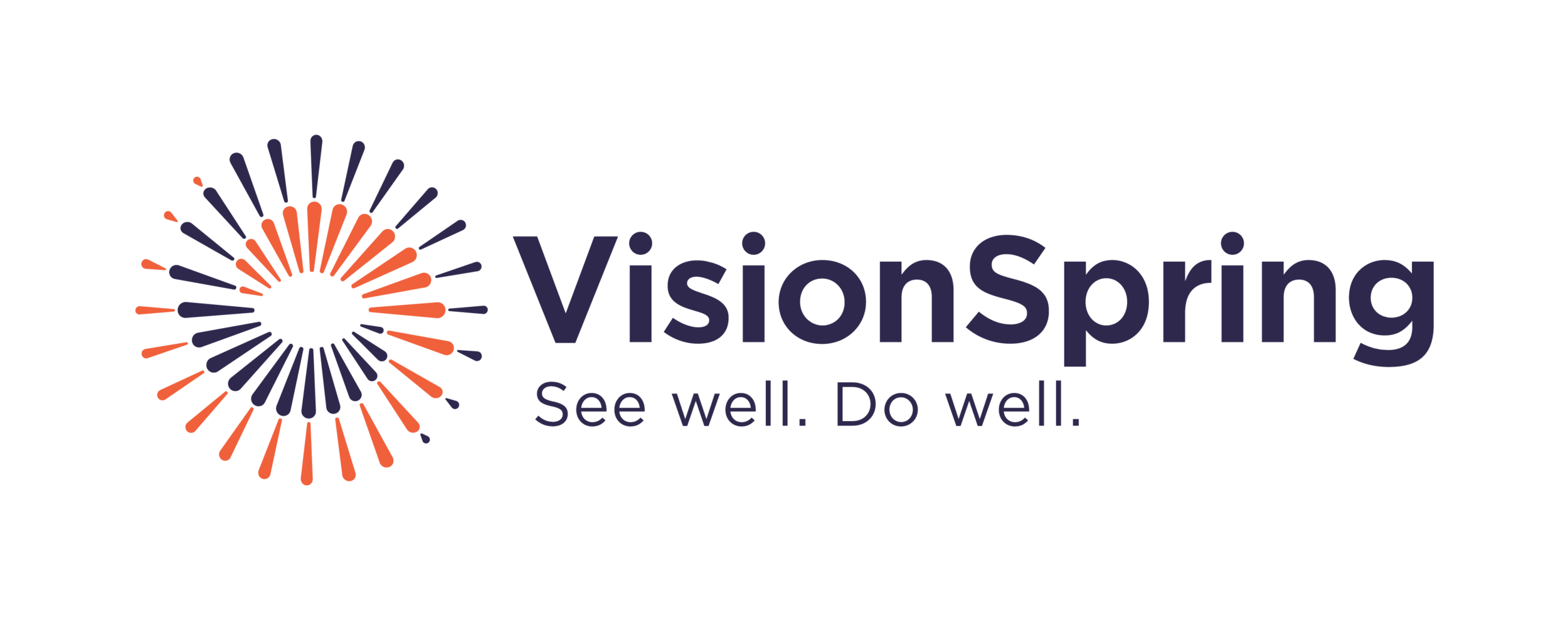Learning for the New Normal: VisionSpring Guidelines for COVID-19 Safe Community Vision Outreach Programs
Click here to read the full report.
For the more than 10% of the world’s population that live in poverty, access to regular vision screening and affordable eyeglasses provide a proven intervention to increase income. Despite eyeglasses being a powerful tool for social and economic development, vision screening and glasses provision is not included in the services typically prioritized by governments or by global aid and development organizations.
VisionSpring began its work to change this reality in South Asia in 2006. By 2019, teams in Bangladesh and India were partnering with garment factories, tea estates, transport authorities, eye hospitals, artisan collectives and local government agencies to enable 1.2 million people a year to see clearly through eyeglasses. In early 2020, the social enterprise was looking forward to increased scale in South Asia, peak volume sales of glasses and expansion in five new markets in Sub-Saharan Africa.
The dramatic spread of the new coronavirus brought these aspirations to a standstill in March 2020. The organization shifted gears quickly. From March to May 2020, VisionSpring created a global supply chain that would provide Personal Protective Equipment for 125 hospitals, eyecare centers and front-line community health organizations in seven countries just four months later. Teams distributed food and safety kits to truck drivers and associated workers in India’s main transit hubs. Before they went anywhere, VisionSpring teams were given the supplies and training to keep themselves, their families and their customers safe. At the end of May and as India began to re-open in early June, 160 VisionSpring team members implemented a Safe Re-Opening Campaign, going door-to-door to distribute kits to 100,000 people containing cloth masks, soap, detergent and educational leaflets, coupled with prevention counseling.
In Summer 2020, VisionSpring’s leadership team set its sights on returning to vision screening. The key challenge facing the organization was how to do so while also keeping its teams and customers safe from infection. Although guidelines for safe eyecare were being developed by professional associations in India, they focused on clinics or eye hospitals – both very controlled environments compared to the outreach programs VisionSpring runs in informal settlements and low-income rural communities.
VisionSpring’s model presented unique risks. For example, no matter how well informed its teams were about infection prevention, the fact that its customer had less exposure to information and were likely to be experiencing fear presented a new operating reality. Because VisionSpring’s approach is mobile, leadership had to adapt to changing and varied government guidelines about inter-state travel. The spread of disease across the country required that VisionSpring develop new safety policies, staff training and capacity to plan for and mitigate risk.
This brief report summarizes VisionSpring’s journey to develop a new COVID-safe protocol to operate in this context. It is written to share with partners our ongoing learning about how best to meet people’s needs during the current pandemic in India, with potential applicability to other settings.

